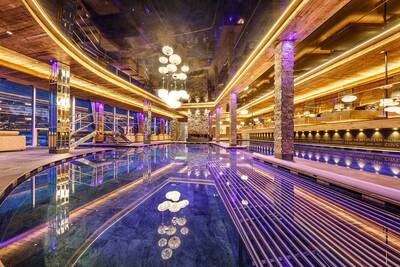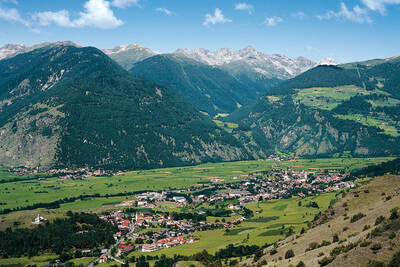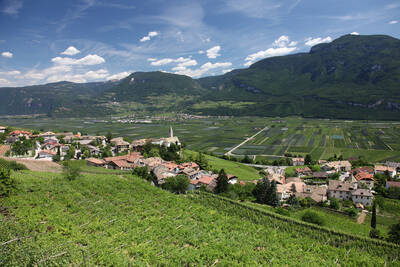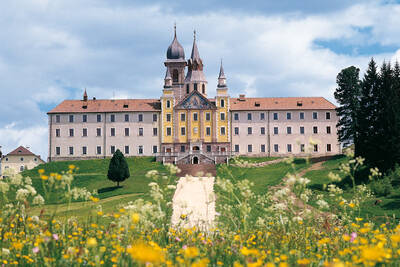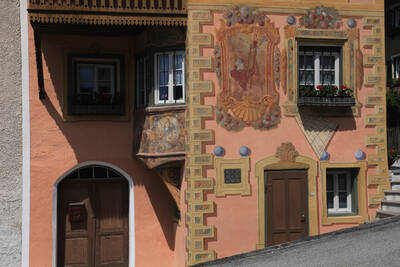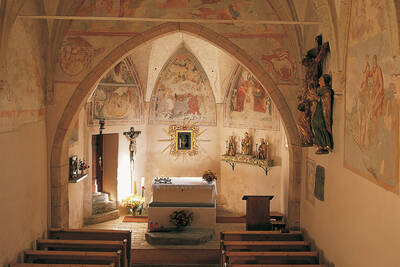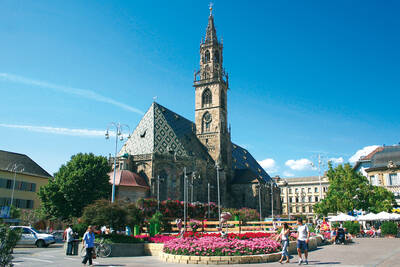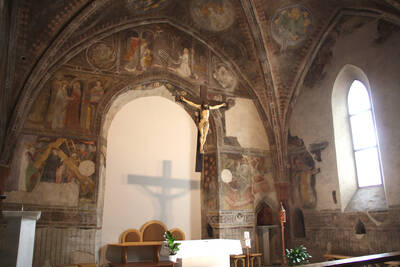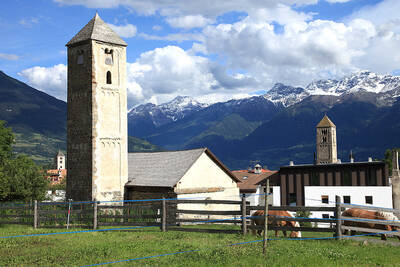To secure his rule, he settled Bavarian farmers and entrusted the Abbot Atto of Scharnitz with the area of Innichen to establish a monastery there. The primary task was the missionization of the pagan Slavs in the entire upper Drava Valley.
This Benedictine monastery dedicated to St. Candidus quickly became the cultural center of the entire region. In 1143, it was converted into a collegiate church, and at that time the construction of a new collegiate church began. The construction took place in several phases until around 1250, the tower was raised in 1326, and the porch was added around 1415.
The collegiate church of Innichen is considered one of the most important Romanesque religious buildings in the Eastern Alpine region. It was built with the participation of Lombard master builders and resembles the fortress buildings of the Crusaders during the time of the Hohenstaufen dynasty. The floor plan has the shape of a Latin cross. Because of its simple, essential elegance, it is also known as the "Cathedral of Innichen."
Especially in the interior of the church, there are some valuable and highly interesting art treasures. The powerful crucifix in the sanctuary immediately catches the eye: The 2.20 m high and crowned "Great Lord of Innichen" was created around 1220 by local artists, together with the attendant figures of Mary and John.
Of particular interest are the frescoes in the polygonal dome. They depict scenes from the creation story and are dated to around 1285. The depictions begin with the creation of the stars and the separation of light and darkness. This is followed by the separation of the heavens from the earth and the separation of the earth from the waters. The creation of the birds and the fish, as well as the creation of the earthly animals, are depicted in a very realistic and detailed manner. This is followed by the birth of Adam and Eve and finally the expulsion from paradise. This scene is particularly expressive and drawn with great emotion.
Other "highlights" include the atmospheric crypt and the Romanesque south portal with a Christ relief and frescoes, which are believed to be by Michael Pacher and depict the church patrons Candidus and Korbinian. The beautiful organ on the gallery dates back to the 17th century and still has its original case. The cemetery and the nearby parish church of St. Michael are also worth seeing.
The collegiate church is open daily from 8:00 a.m. to 6:00 p.m.; during the summer months, guided tours take place weekly.







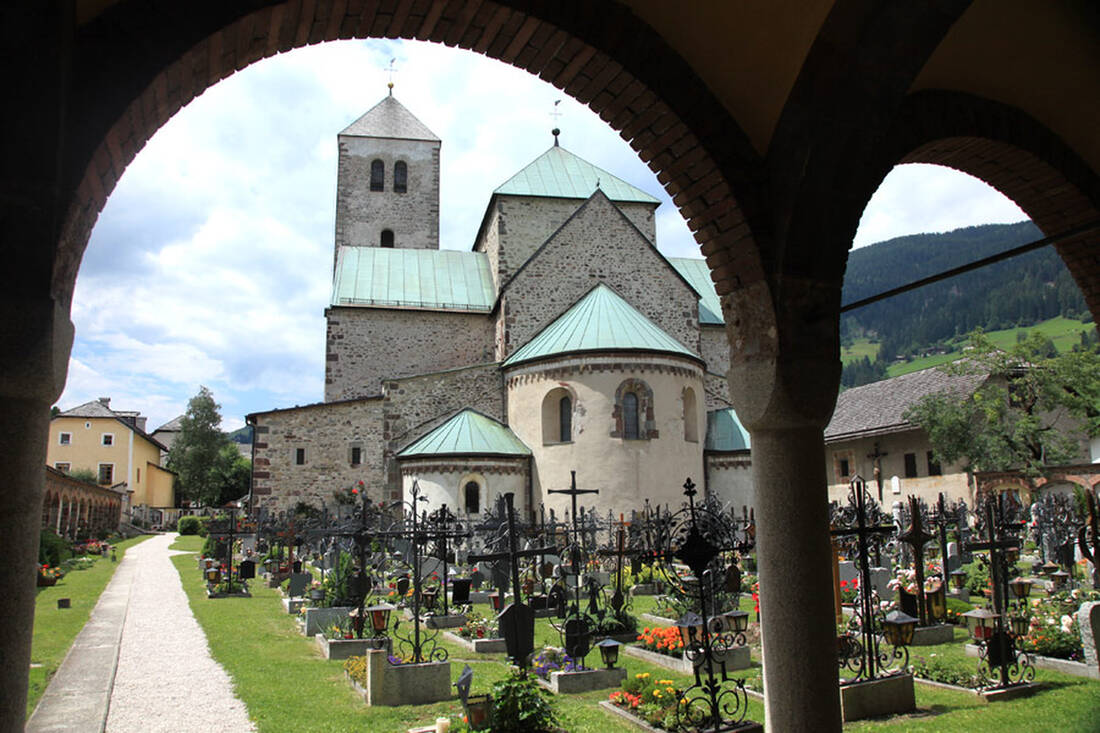
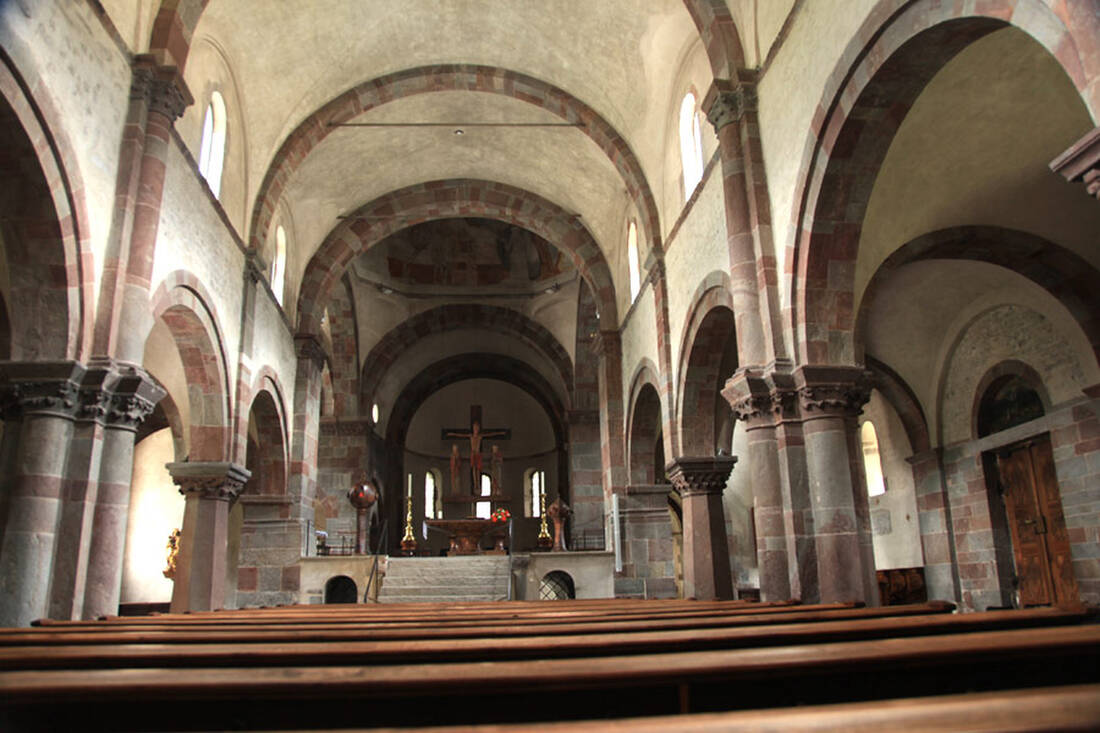
 How do you like the content of this page?
How do you like the content of this page?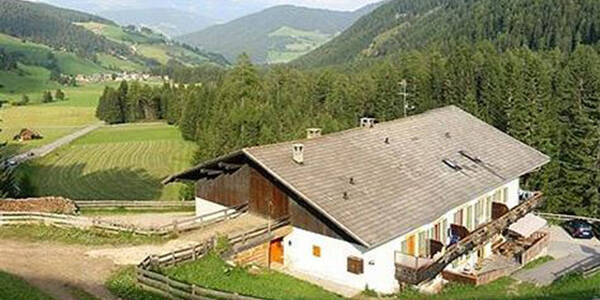

 notice
notice